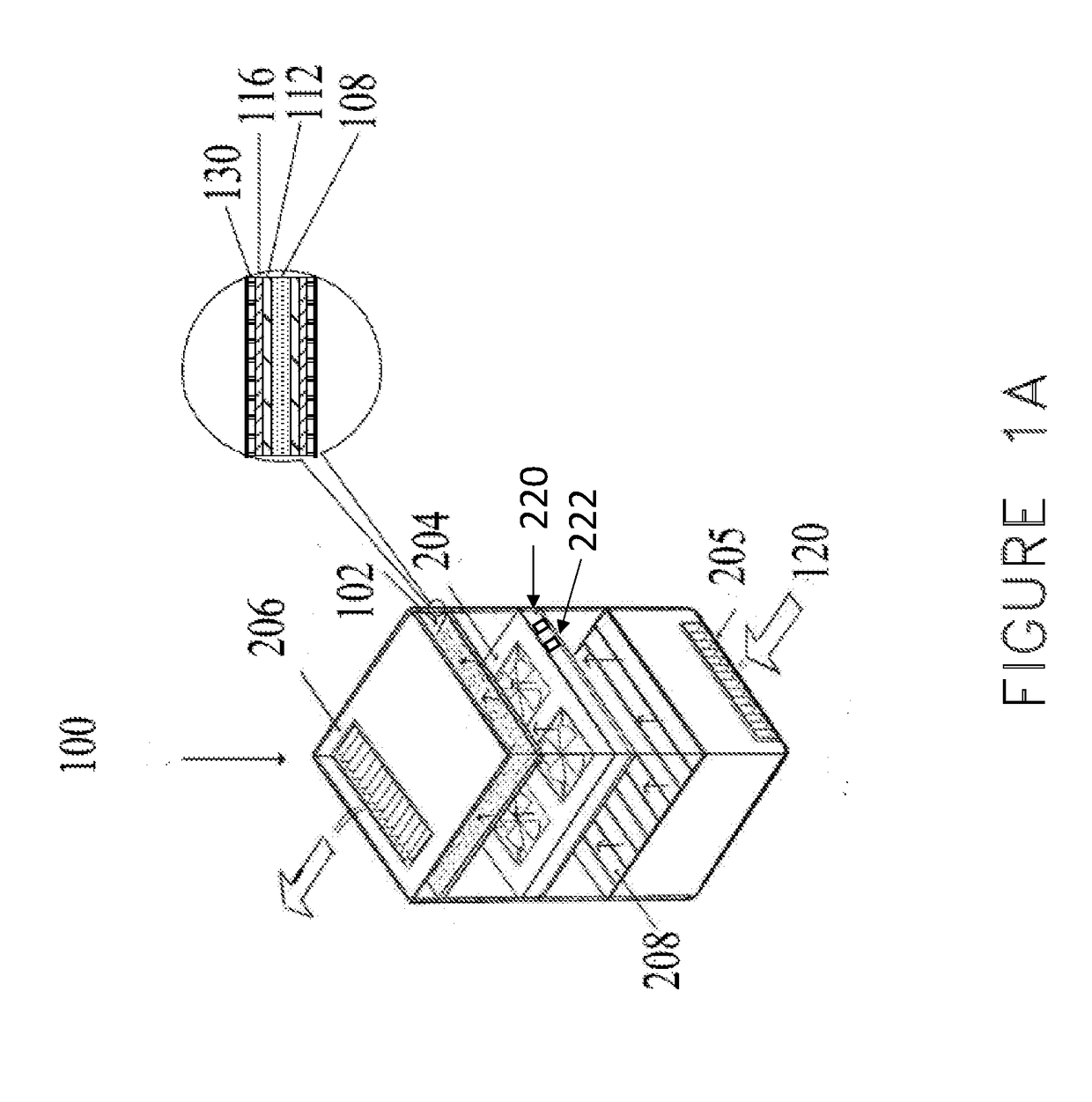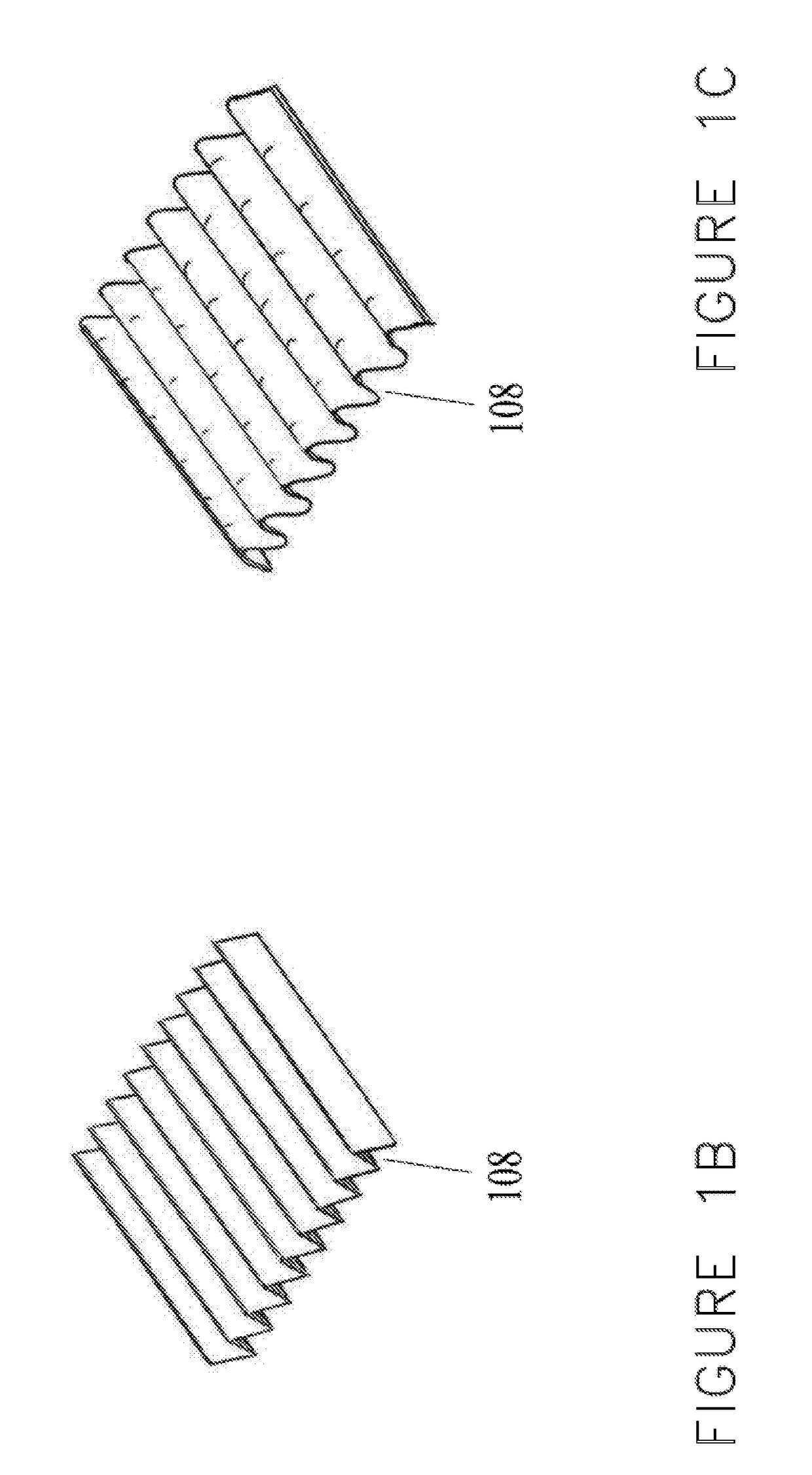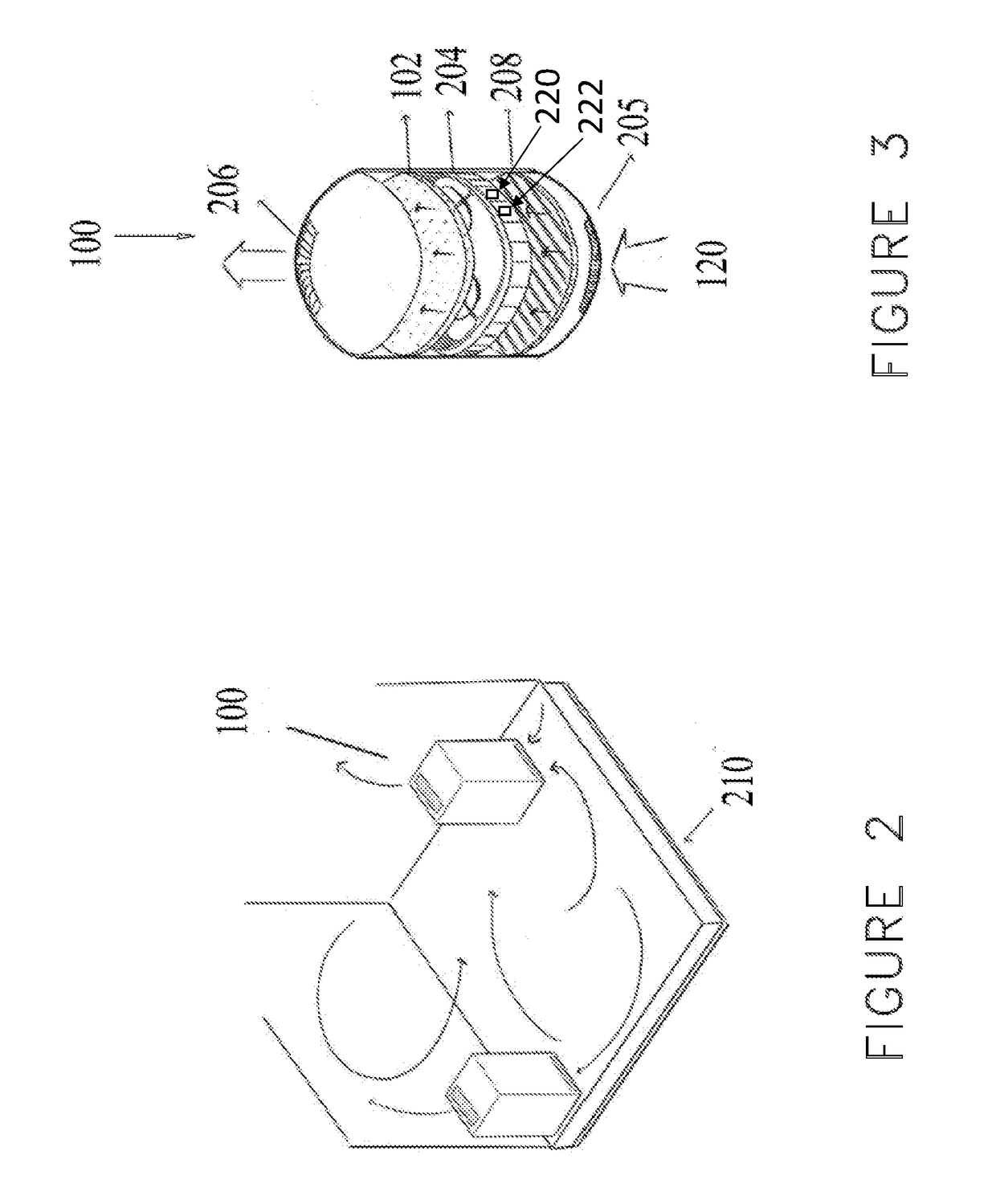Method, devices and systems for radon removal from indoor areas
a technology for indoor areas and adsorption scrubbers, which is applied in the field of air treatment, can solve the problems of low capture efficiency of radon from air stream in a practically-sized adsorption scrubber, and the inability to find cost-effective adsorption based solution for radon mitigation, so as to reduce radon levels and reduce radon levels. , the effect of cost saving
- Summary
- Abstract
- Description
- Claims
- Application Information
AI Technical Summary
Benefits of technology
Problems solved by technology
Method used
Image
Examples
Embodiment Construction
[0047]The inherently low capture rate of radon by most adsorbents is an important consideration in developing a practical method to remove radon from indoor air. Another important consideration is that indoor radon levels are determined by the interplay between very slow infiltration of radon and its natural elimination by radioactive decay. A third important consideration is the fundamental trade-off in adsorption scrubbing, between the flow rate of an air stream through an adsorbent layer and the capture efficiency of the target contaminant. The slower the flow, the longer the “dwell time” of the air in the adsorbent layer, thereby generally increasing the capture efficiency. However, the increased capture efficiency comes at the expense of a smaller amount of air that is treated in a given amount of time. In the case of radon, a noble gas with very weak affinity to most surfaces, high capture efficiency would require extremely slow flow rates or very large volumes of sorbent.
[004...
PUM
 Login to View More
Login to View More Abstract
Description
Claims
Application Information
 Login to View More
Login to View More - R&D
- Intellectual Property
- Life Sciences
- Materials
- Tech Scout
- Unparalleled Data Quality
- Higher Quality Content
- 60% Fewer Hallucinations
Browse by: Latest US Patents, China's latest patents, Technical Efficacy Thesaurus, Application Domain, Technology Topic, Popular Technical Reports.
© 2025 PatSnap. All rights reserved.Legal|Privacy policy|Modern Slavery Act Transparency Statement|Sitemap|About US| Contact US: help@patsnap.com



